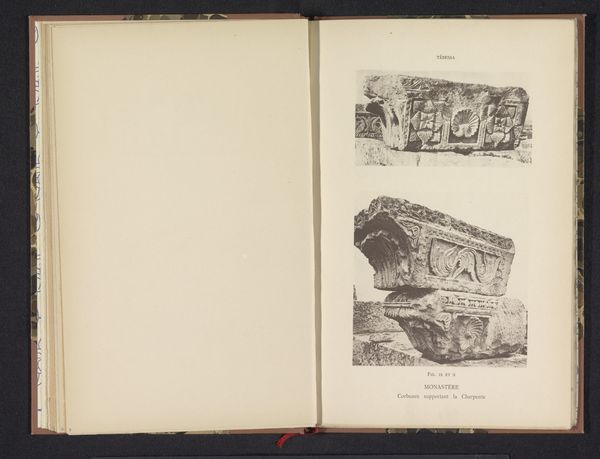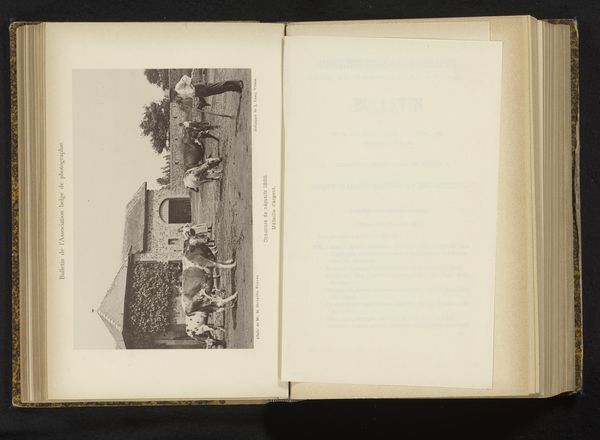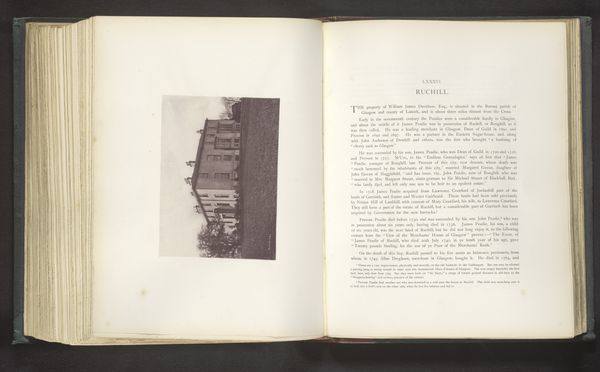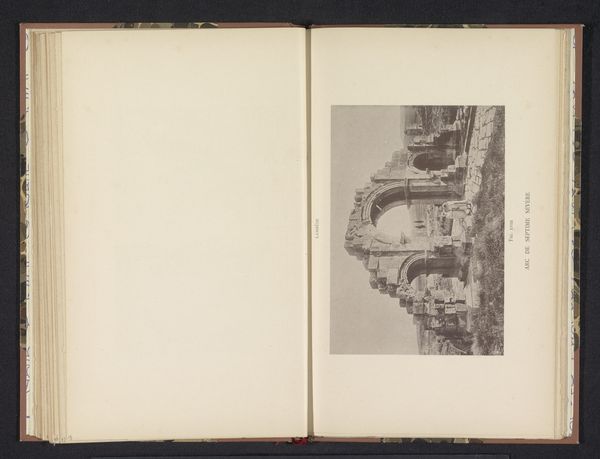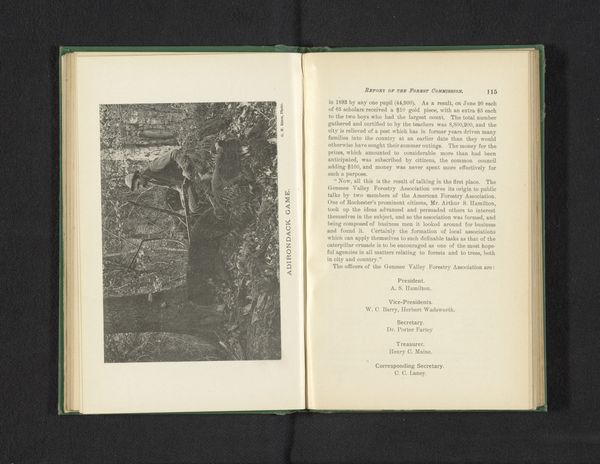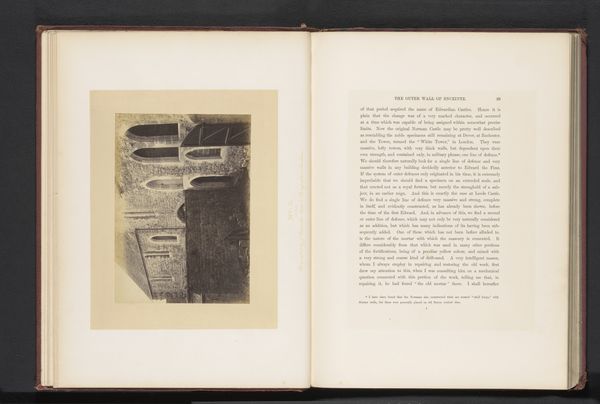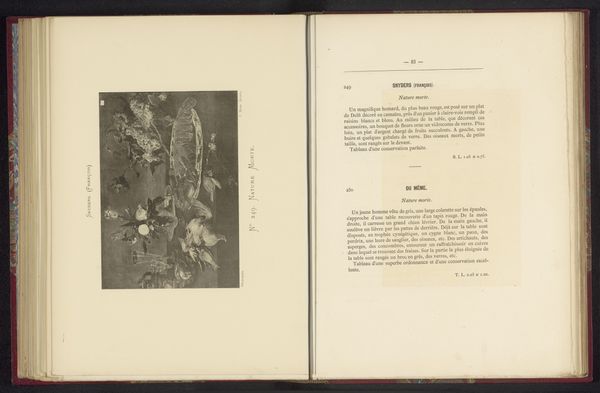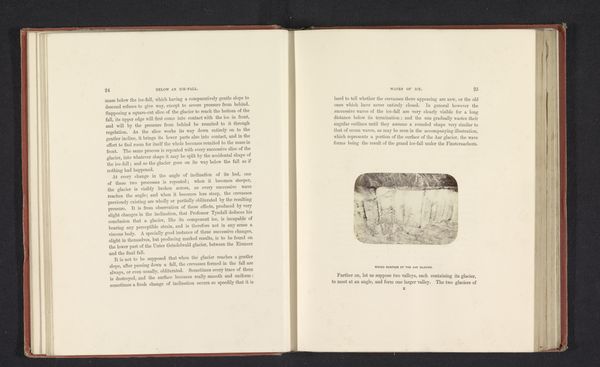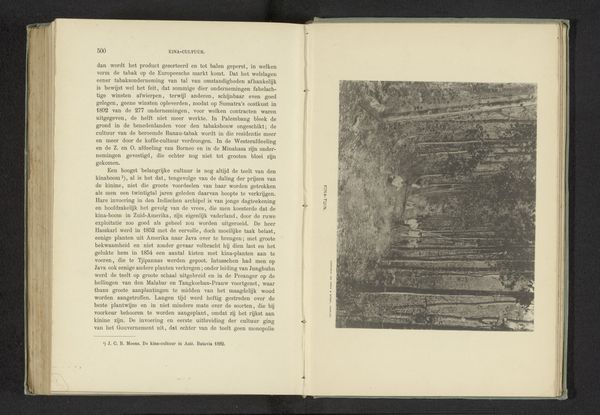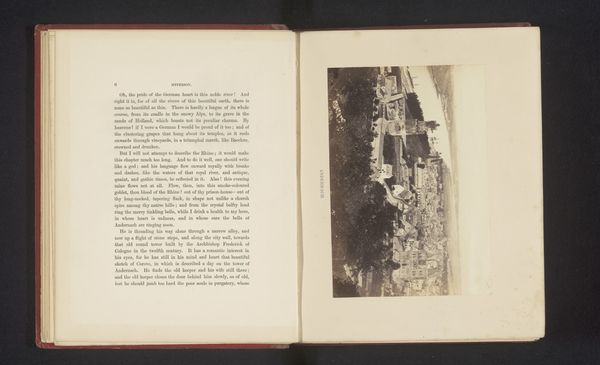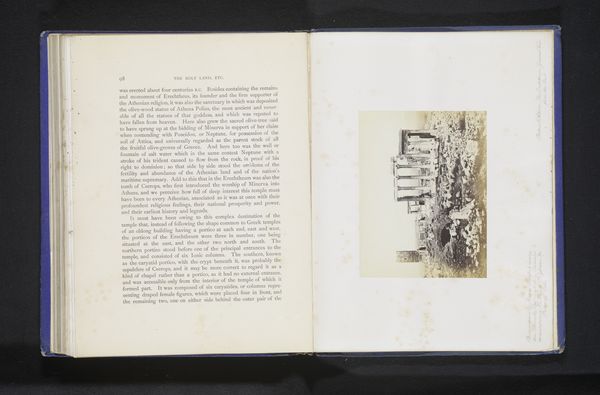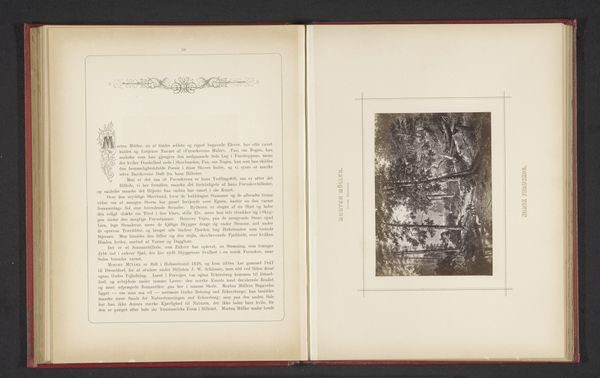
Twee kraagstenen van de ruïne van een kloosterkerk in Tébessa, gedecoreerd met vissengolven before 1894
0:00
0:00
print, photography
#
medieval
#
ink paper printed
# print
#
photography
#
romanesque
#
ancient-mediterranean
#
column
#
historical font
Dimensions: height 248 mm, width 160 mm
Copyright: Rijks Museum: Open Domain
Here are two corbels from the ruins of a monastery church in Tébessa, decorated with fish-wave patterns. The anonymous artist has utilized stone to present complex geometries. Notice the repetitive fish-wave patterns. These are not merely decorative; they impose a rhythmic structure. The curvilinear forms contrast with the corbels' blocky shapes, setting up a visual dialogue between organic and inorganic elements. This juxtaposition can be interpreted through semiotics. The wave patterns, symbolizing fluidity and change, meet the solid form of the stone, embodying permanence. It’s a structured interplay of opposing elements, creating tension and balance. Consider how the artist’s formal choices destabilize our understanding of space and form, inviting contemplation of transience and stability. This is formalism, not just as aesthetics but as a philosophical discourse about the nature of existence.
Comments
No comments
Be the first to comment and join the conversation on the ultimate creative platform.
